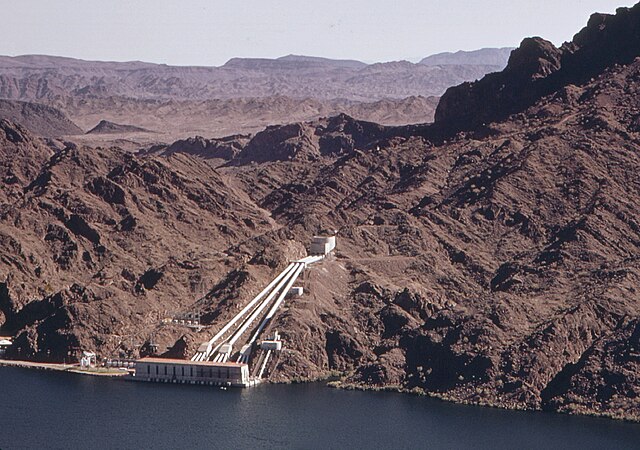Metropolitan Water District of Southern California
The Metropolitan Water District of Southern California is a regional wholesaler and the largest supplier of treated water in the United States. The name is usually shortened to "Met," "Metropolitan," or "MWD." It is a cooperative of fourteen cities, eleven municipal water districts, and one county water authority, that provides water to 19 million people in a 5,200-square-mile (13,000 km2) service area. It was created by an act of the California State Legislature in 1928, primarily to build and operate the Colorado River Aqueduct. Metropolitan became the first contractor to the State Water Project in 1960.
Metropolitan Water District of Southern California
Drinking water pumping station near Parker Dam, 1972
Colorado River Aqueduct
Interior of zeolite building at F. E. Weymouth plant
The Colorado River Aqueduct, or CRA, is a 242 mi (389 km) water conveyance in Southern California in the United States, operated by the Metropolitan Water District of Southern California (MWD). The aqueduct impounds water from the Colorado River at Lake Havasu on the California-Arizona border, west across the Mojave and Colorado deserts to the east side of the Santa Ana Mountains. It is one of the primary sources of drinking water for Southern California.
Parker Dam on Lake Havasu where Colorado River waters are initially drawn into the system
Whitsett Pumping Plant, located on Lake Havasu reservoir, lifts water 291 feet (89 m) for the Colorado River Aqueduct, on the California side.
Colorado River Aqueduct near Joshua Tree National Park, including Pinto Wash Syphon, north of Desert Center







